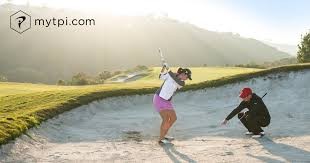×
The ultimate golf swing is what every golfer longs to achieve. Commanding the direction of the golf ball is both an art and a science - it is a swift, sharp force that uses your whole body.
Chronic pain can be particularly devastating to a golfer - and it may be surprising to some to know that a lot of the time, pain can stem from incorrect swinging techniques.
What if there was a way to treat both your pain, and improve your swinging technique? This is something that occurred to Steven from Massage and Move, based in Perth - so after a stint training in Amsterdam, he returned to Perth, with a massage therapy treatment programme targeted toward golfers.
We chatted to him to get his top tips on treatments for both pain relief and golf swinging, common issues, and to find out more about what Massage and Move offer.
Small changes to your lifestyle will have a big impact in your golfing performance.Your innovative therapy combines golf specific movements with massage therapy. How do these two things work together?
In 2003, Dr. Greg Rose and Dave Phillips started to devise the TPI assessment by pulling data from players of different ages, shapes, sizes and fitness levels from all over the world. Through this, they discovered how a properly functioning body allows a player to swing a golf club in the most efficient way possible.
A TPI assessment consists of a variety of different body weight movements which are all relevant to a golfers swing. This is known as the body-swing connection and from these results information is gathered about their swing characteristics. During the assessment if the client is unable to perform the movement efficiently or causes pain, this indicates that there could be a fault in their golf swing.
Common golfing injuries include golfers' elbow, and lower back pain. These can be detected during the assessment and treated accordingly. After a series of massage treatments or prescribed fitness exercises we would reassess and hope to see the fitness handicap improve!

You trained in Amsterdam. Tell us more about this experience – how did you find out about the course? What led you to pursue this?
Whilst I was a personal trainer in 2013 in Edinburgh, a client of the gym was working through a fitness program that had been prescribed to them from a TPI fitness coach. I was helping them to ensure that they were performing all the movements correctly and not causing any injuries to themselves. Prior to this I had never heard of TPI myself, so I got researching!
During the course I was able to meet a variety of people from different backgrounds, qualification, and experiences. The course had professional golfing instructors, medical professionals and fitness professionals so it was a good opportunity to see various approaches to treatments.
How much of a problem are golf related injuries? Why do you believe it is really important that golfers ensure pain is treated?
‘Prevention is better than cure’. This is a philosophy that I have always believed in: whether it be in learning any new skills, or in general day to day activities.
It is said that it takes the body around 300 repetitions to make that skill automatic, but to relearn a faulty movement pattern takes around 3000 repetitions!
It takes the body around 300 repetitions to make that skill automatic, but to relearn a faulty movement pattern takes around 3000 repetitions!Small changes to your lifestyle will have a big impact in your golfing performance. If untreated, the pain may spread elsewhere as the body and surrounding soft tissue has to compensate for the restriction in the joint.
Part of the treatments on offer include medical acupuncture, and myofascial release. Can you tell us more about these – how do they all work? What are the various benefits of these kinds of treatments?
From the assessment, we start to gain a better understanding of what may be causing restrictions during the golf swing. Early extension or ‘over the top’ swings are two common causes, amongst many others.
Each individual technique holds different benefits to your body, and your treatment is tailored to the type of restrictions and/or pain you have. In the case of myofascial release specifically, this is a type of massage which involves applying gentle, sustained pressure on the myofascial connective tissue to reduce pain and restore motion. If the client is able to move a joint through a range of movement with only mild pain, this can be a good option.
**
Steven is based at the Althos Clinic, Perth, ever Monday from 9am to 4pm (with some evening appointments available). Find out more here >>>
Live Active Leisure has launched a new campaign encouraging the residents of Perth and Kinross to ‘Travel the World with LAL’.
May 27th Wednesday 2020
Chrystal Matthan is the 24 year old netball player from Perth who was recently selected for the Scottish Thistles Long Squad!
February 27th Thursday 2020
Foundation trustee Charlie Gallagher recently handed over a £2000 cheque to Academy head of youth development Alistair Stevenson.
January 31st Friday 2020